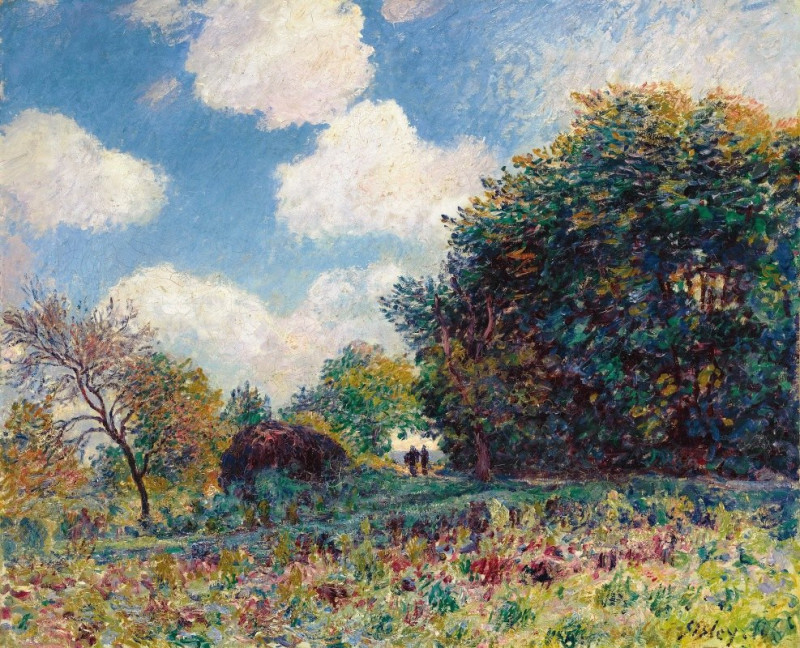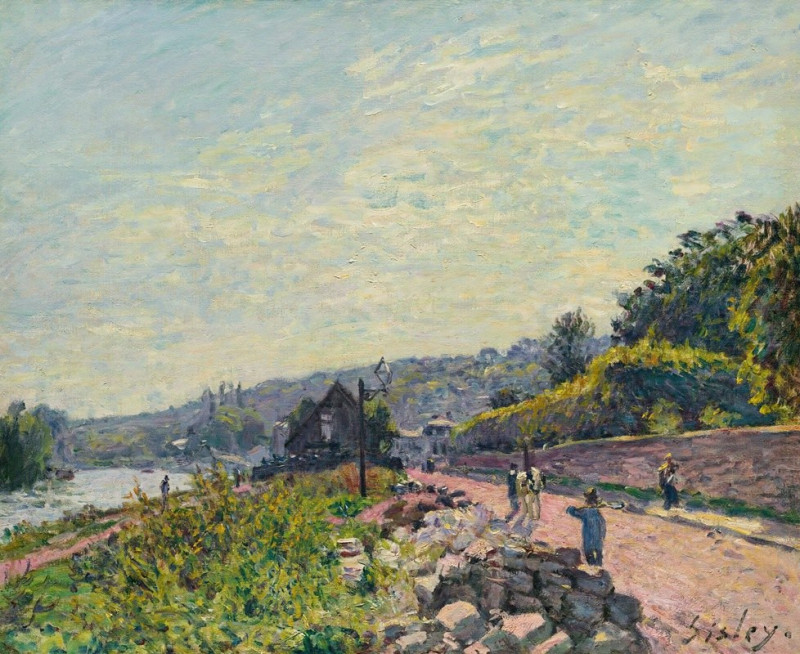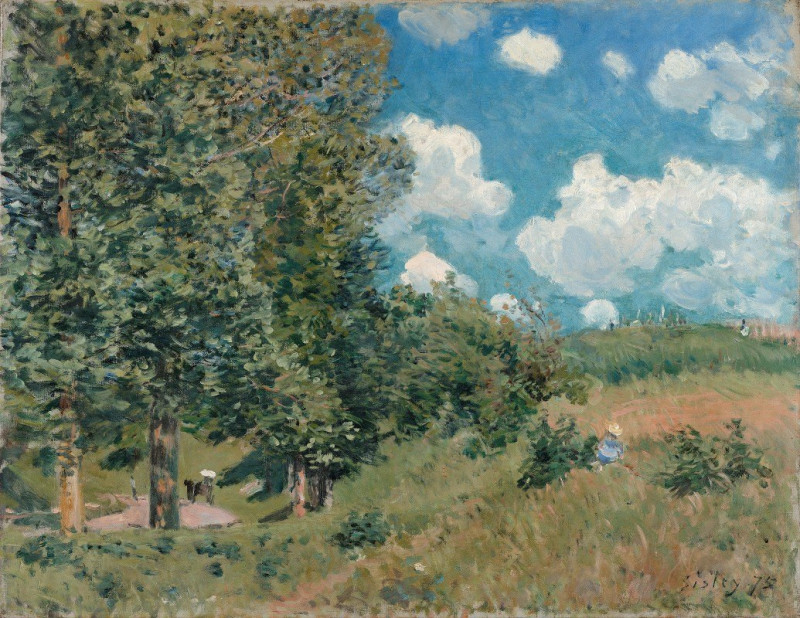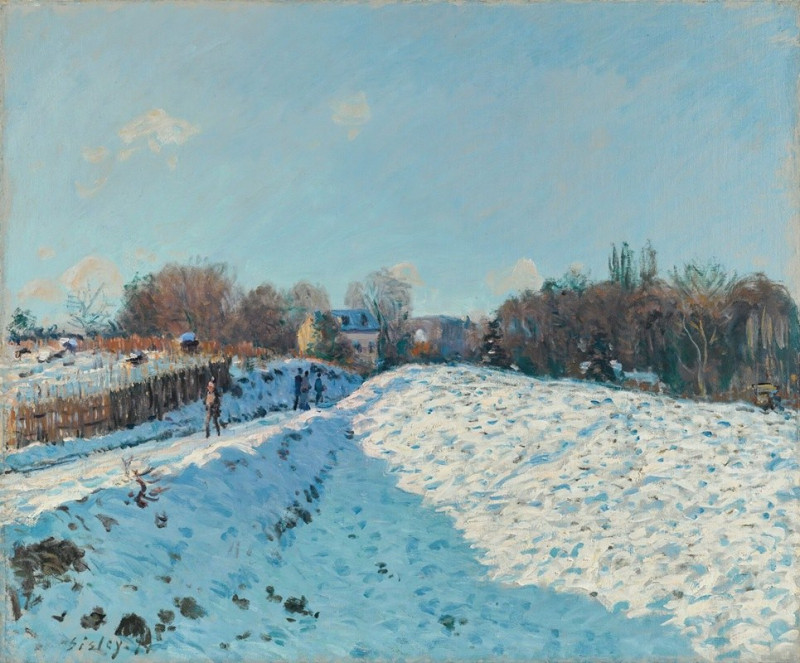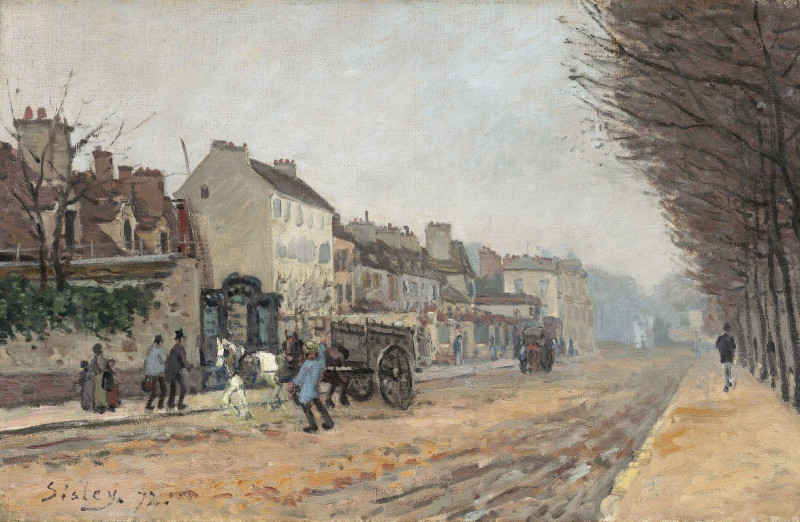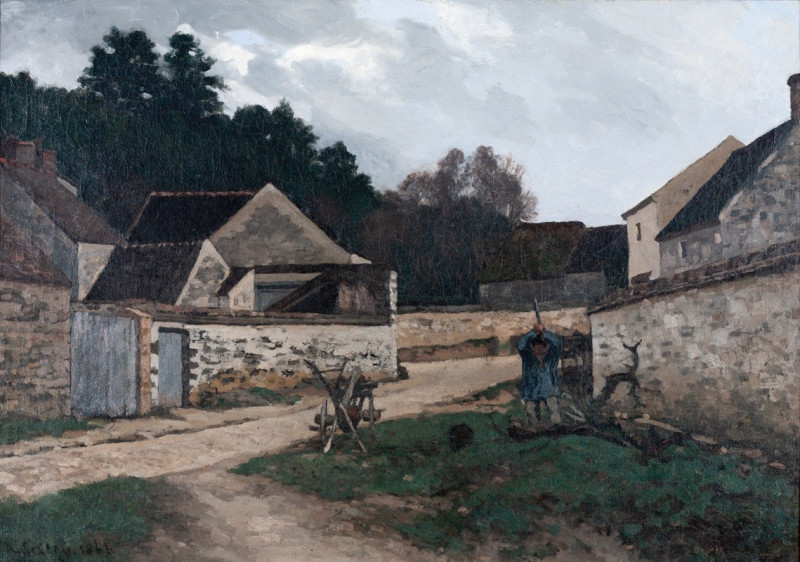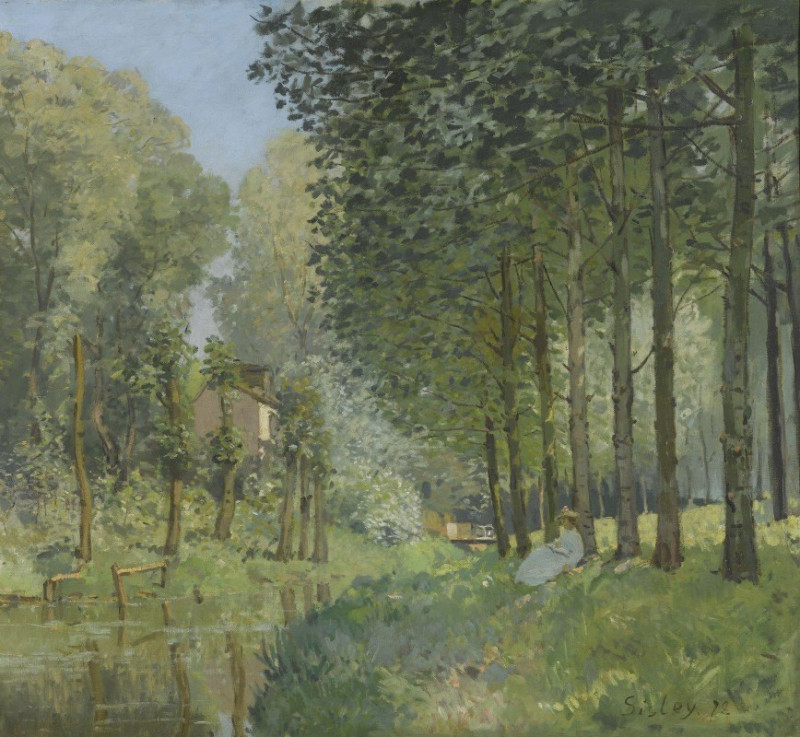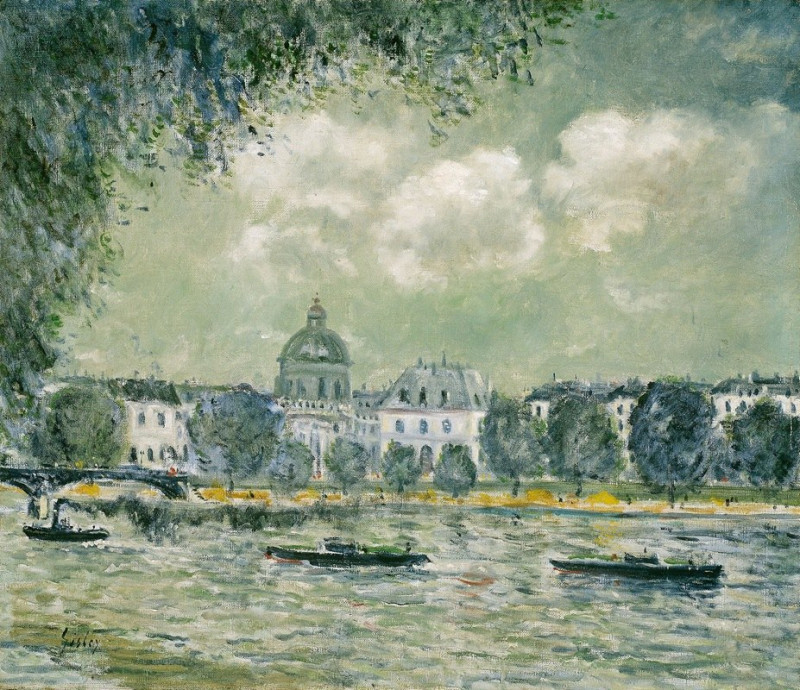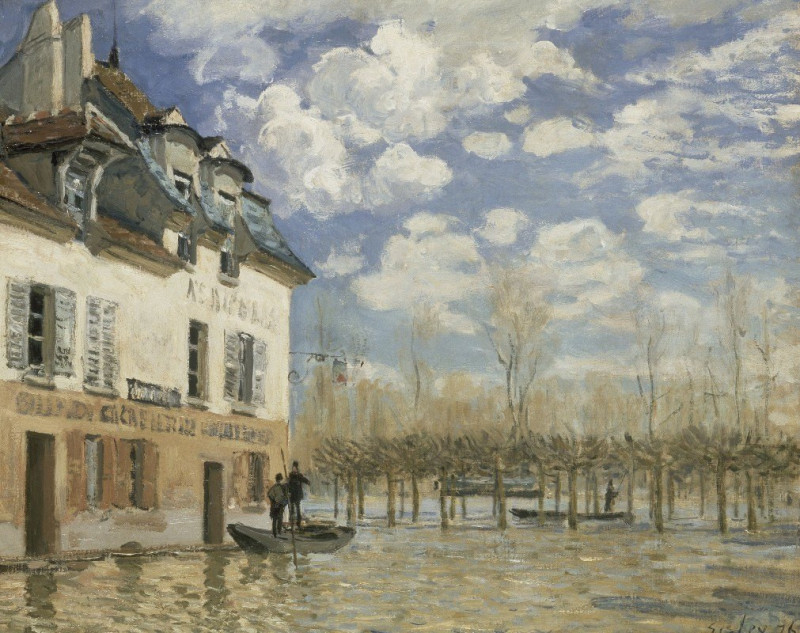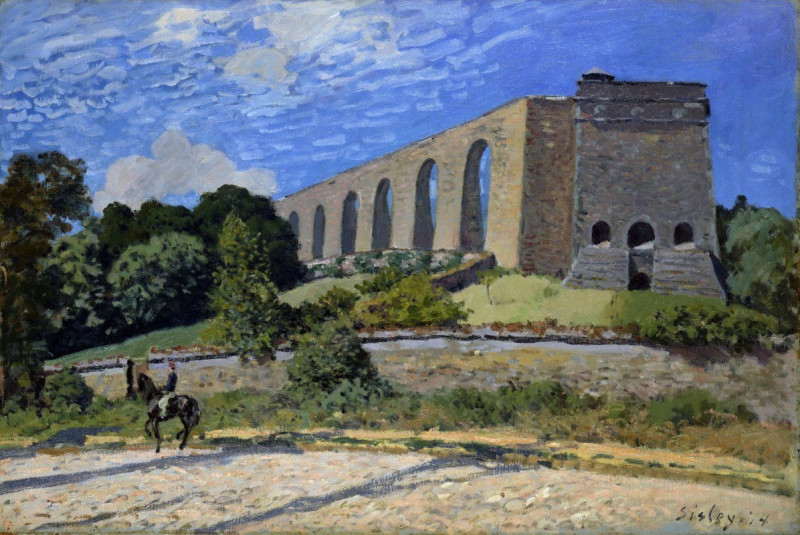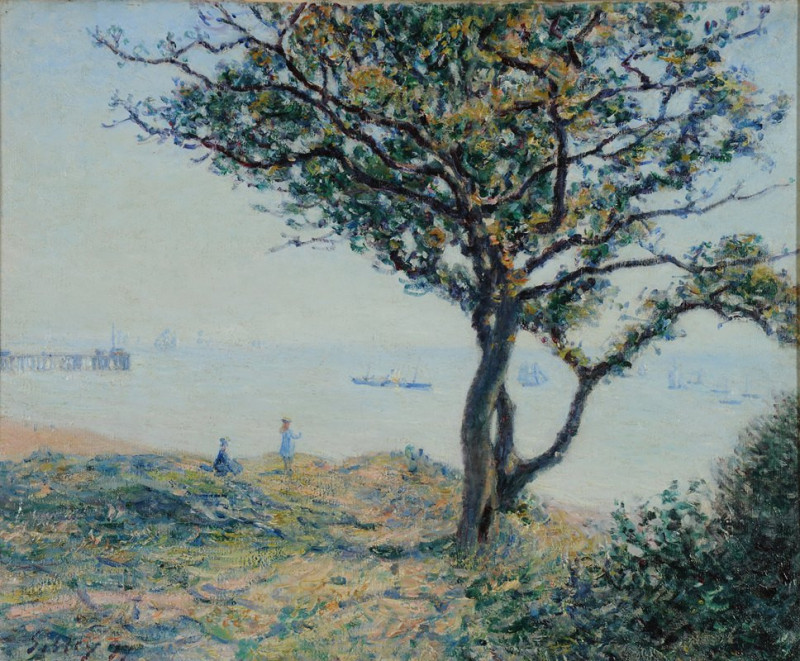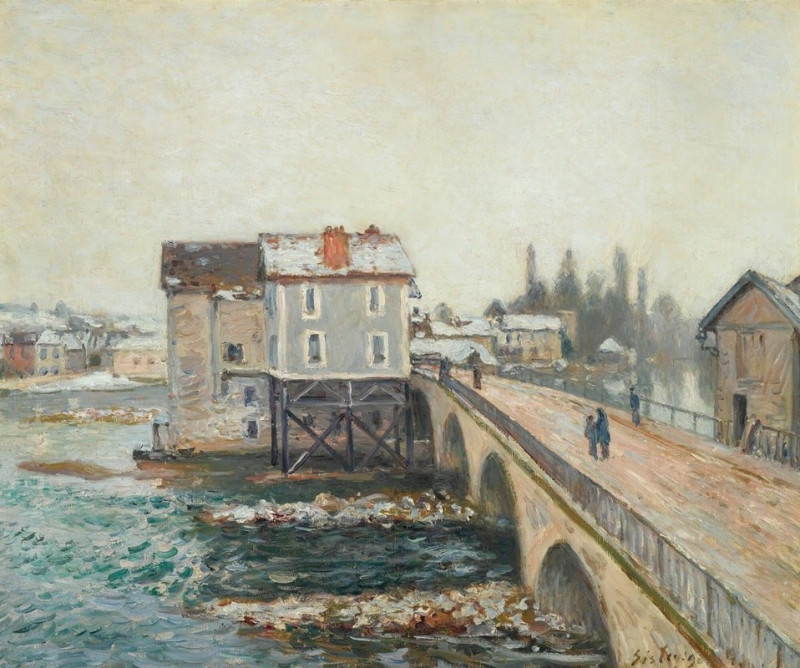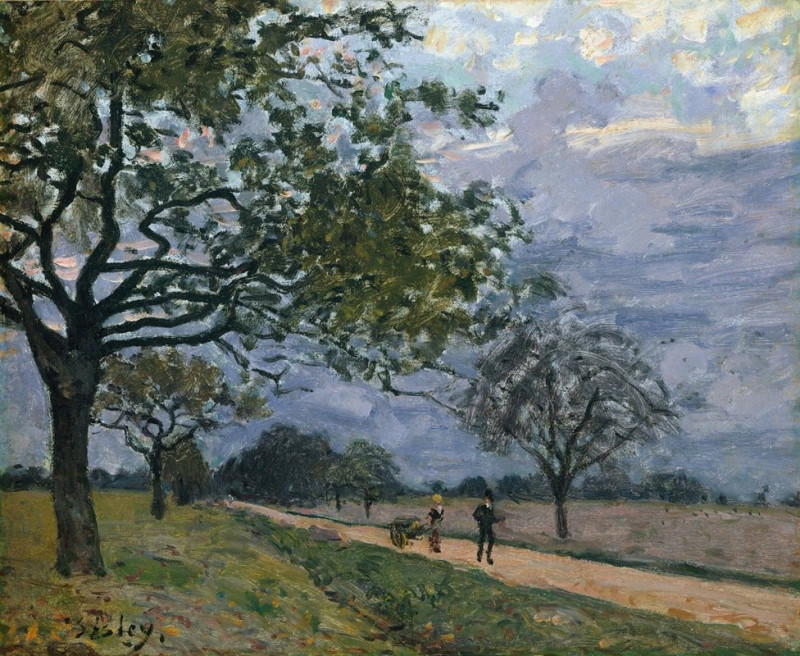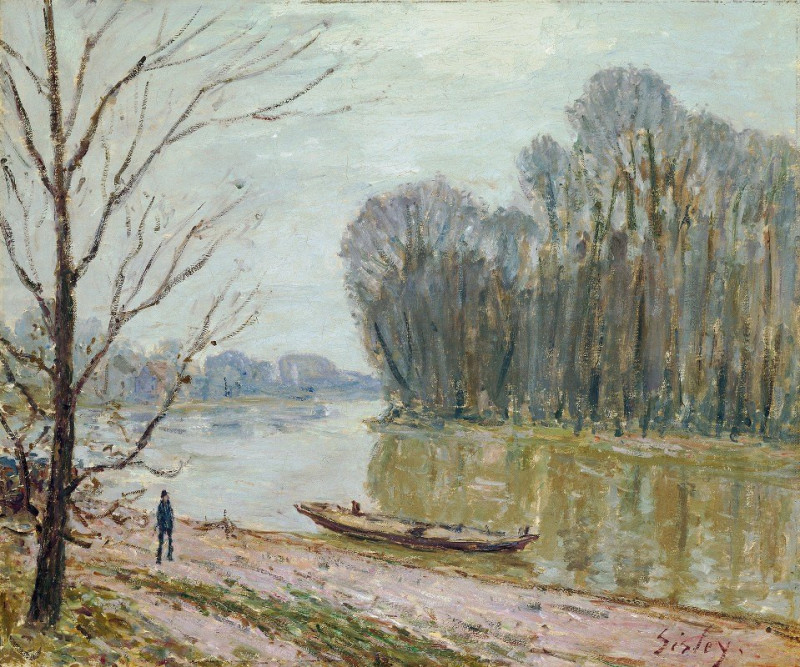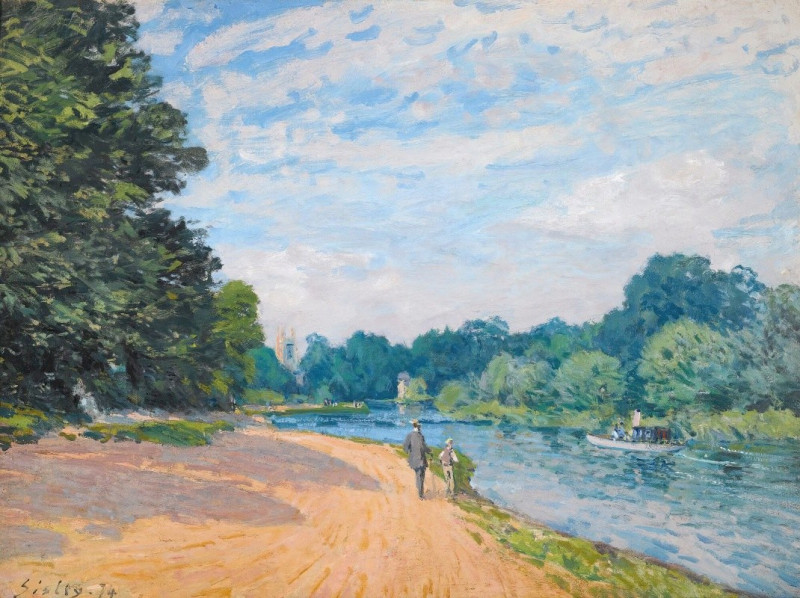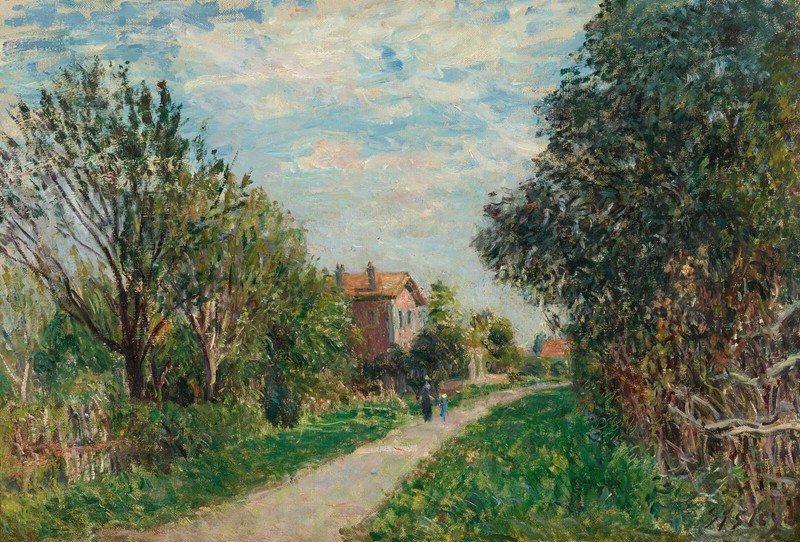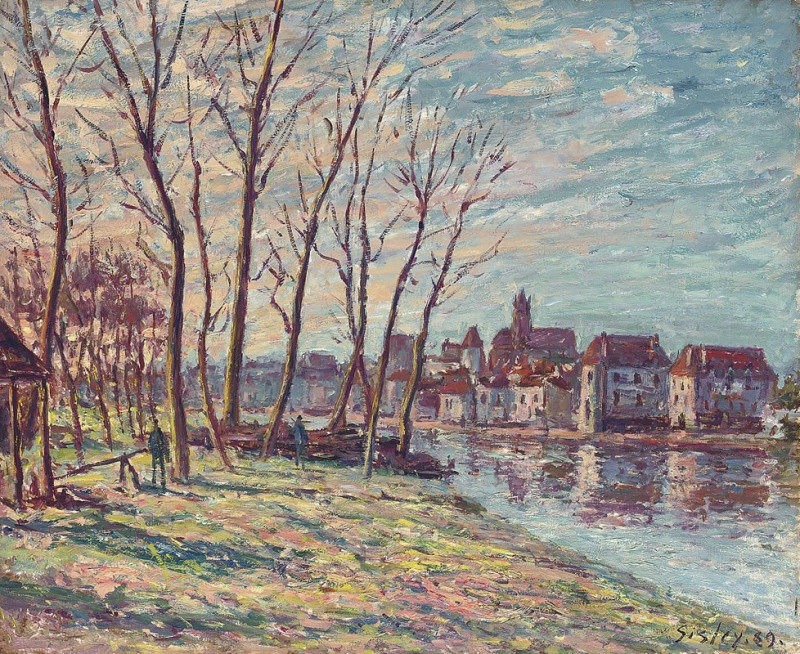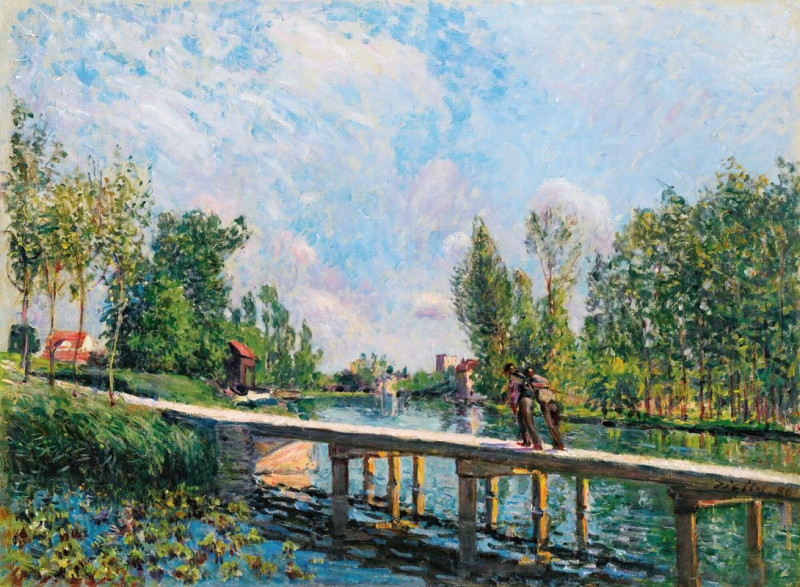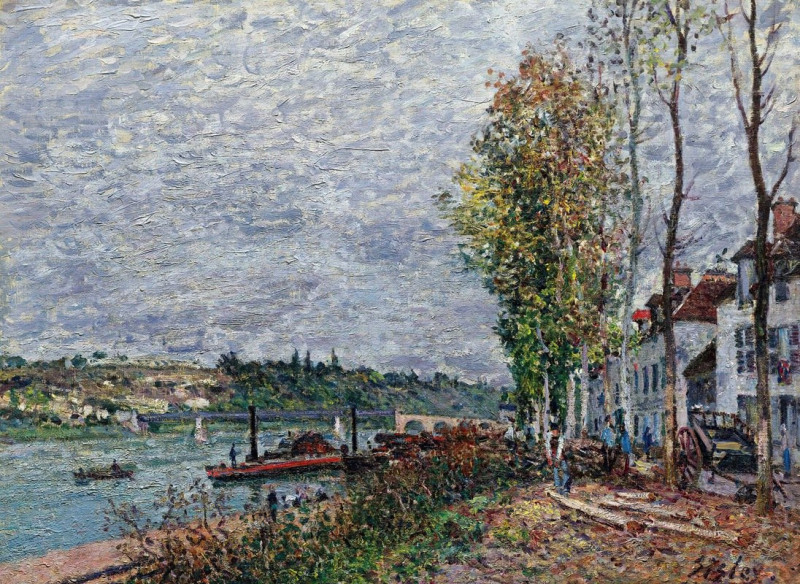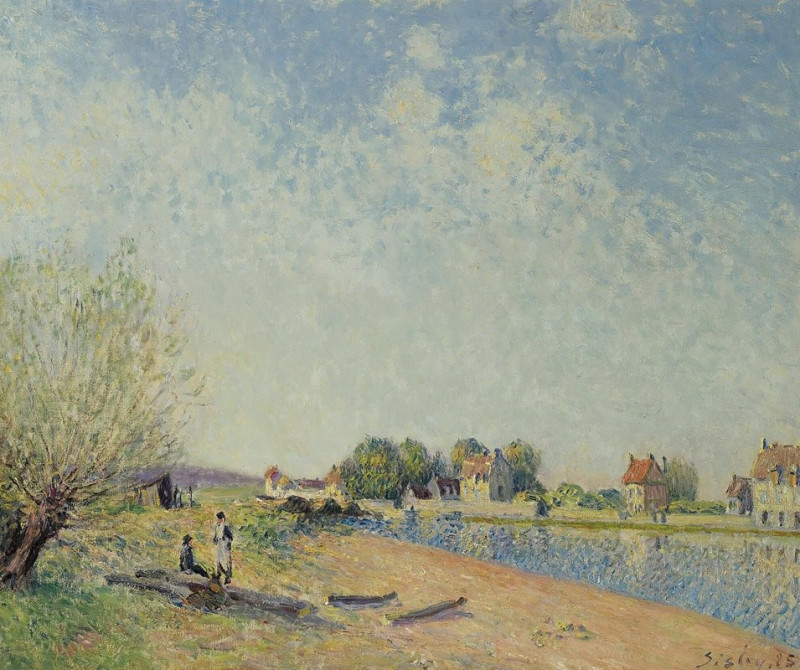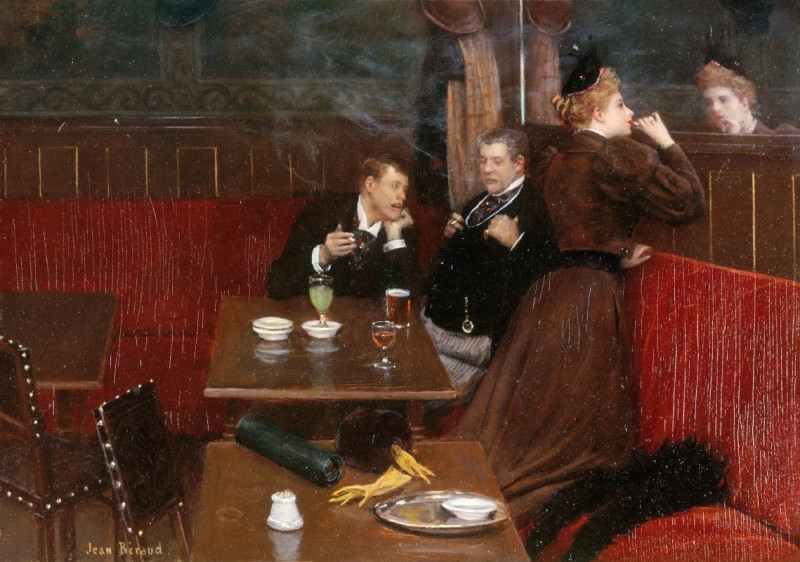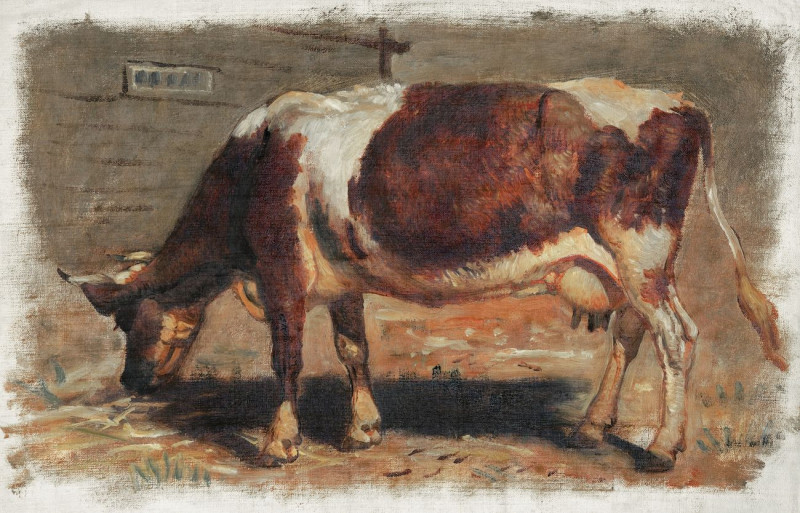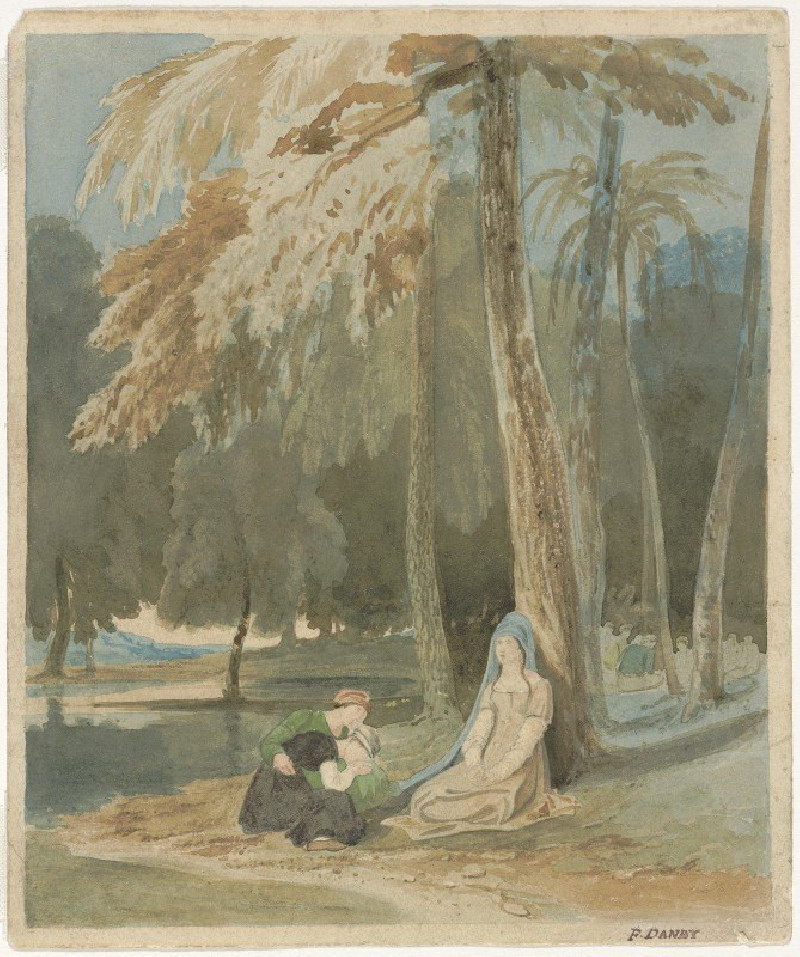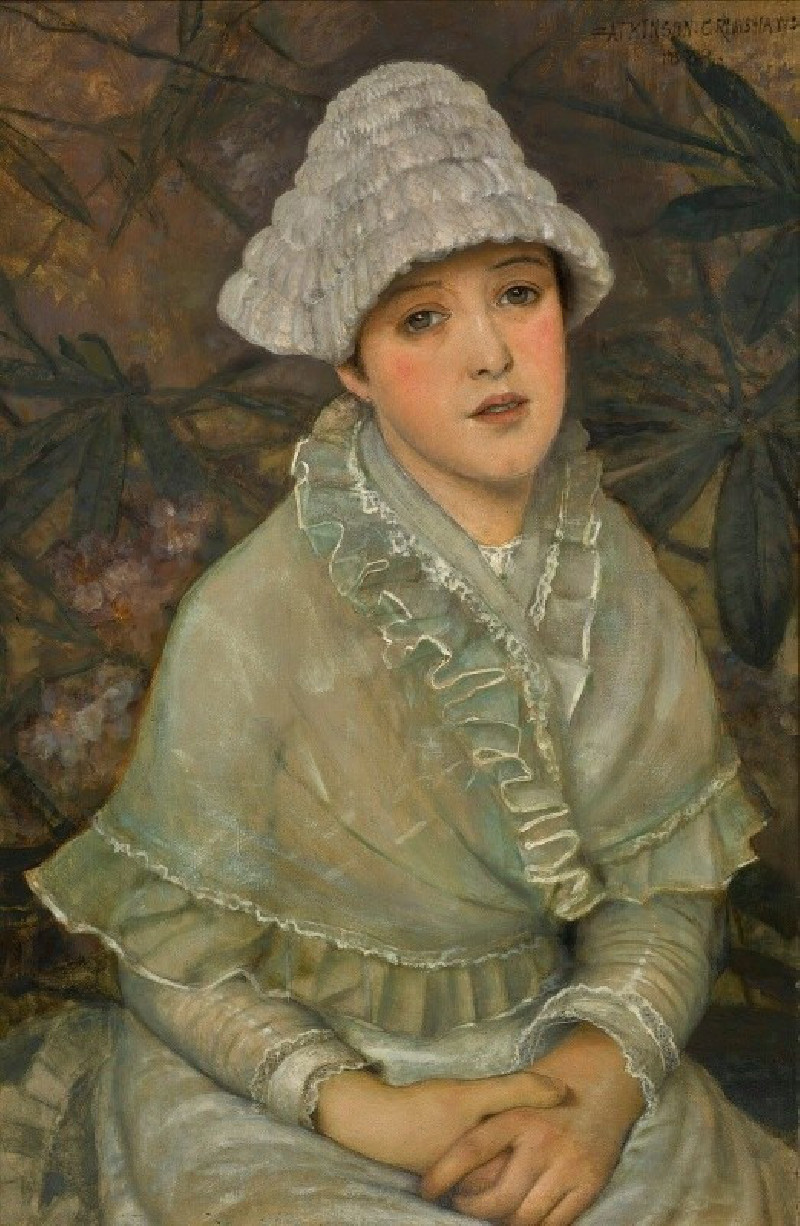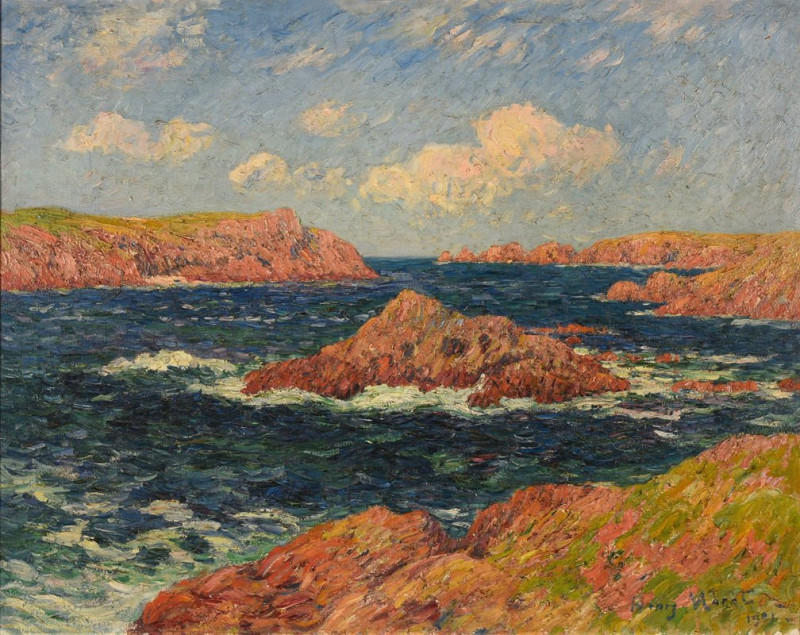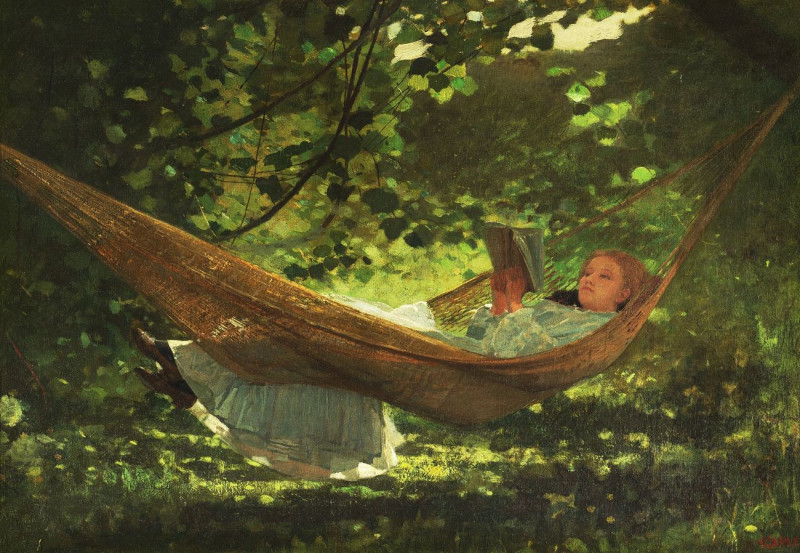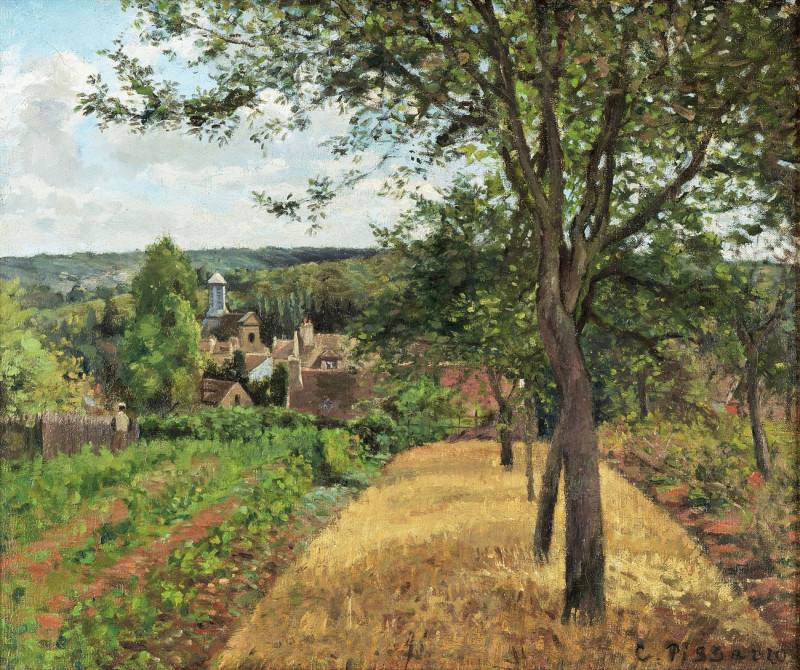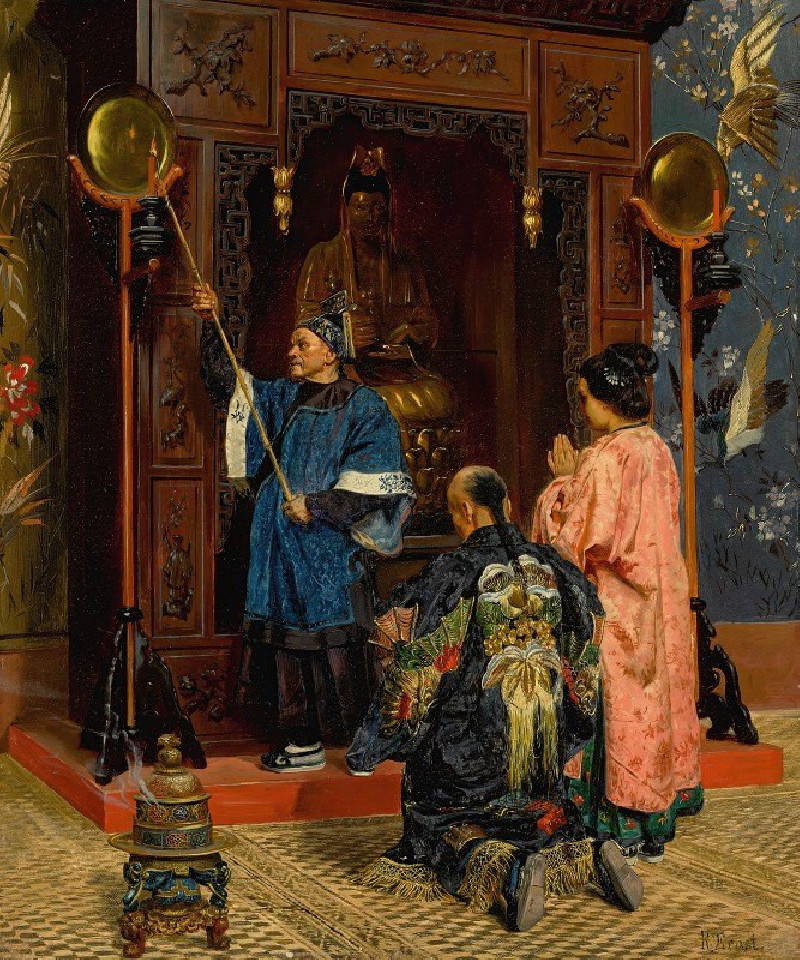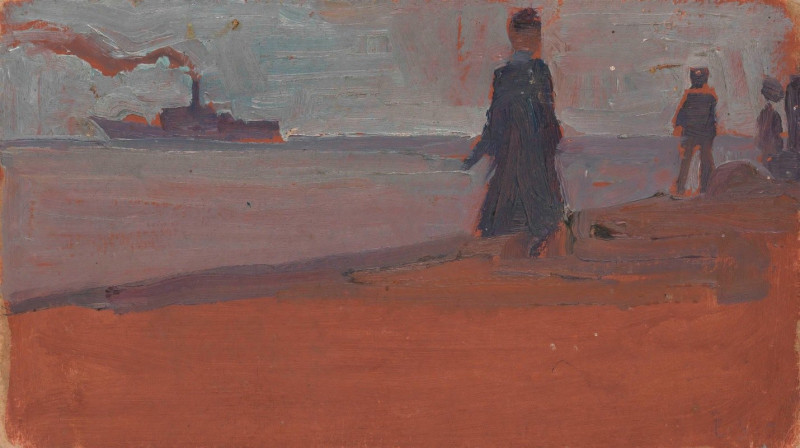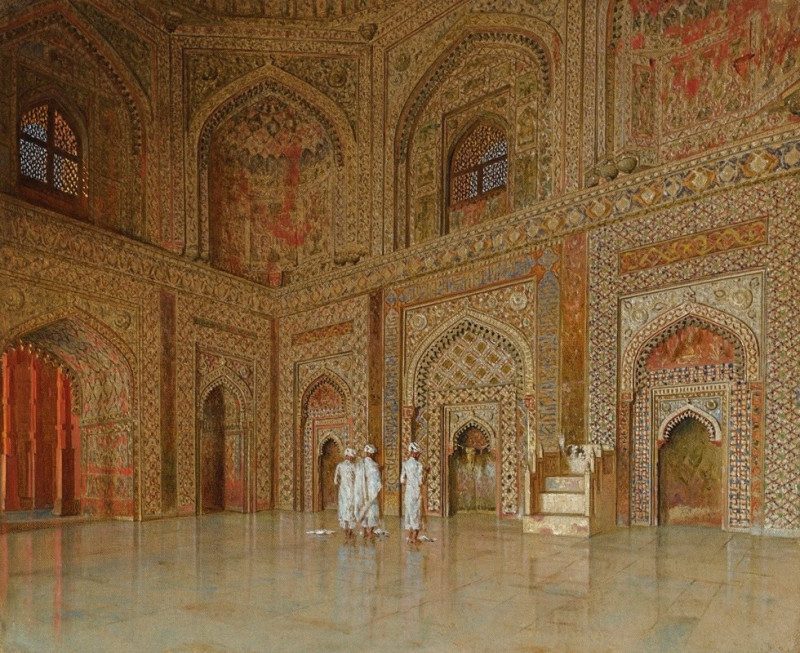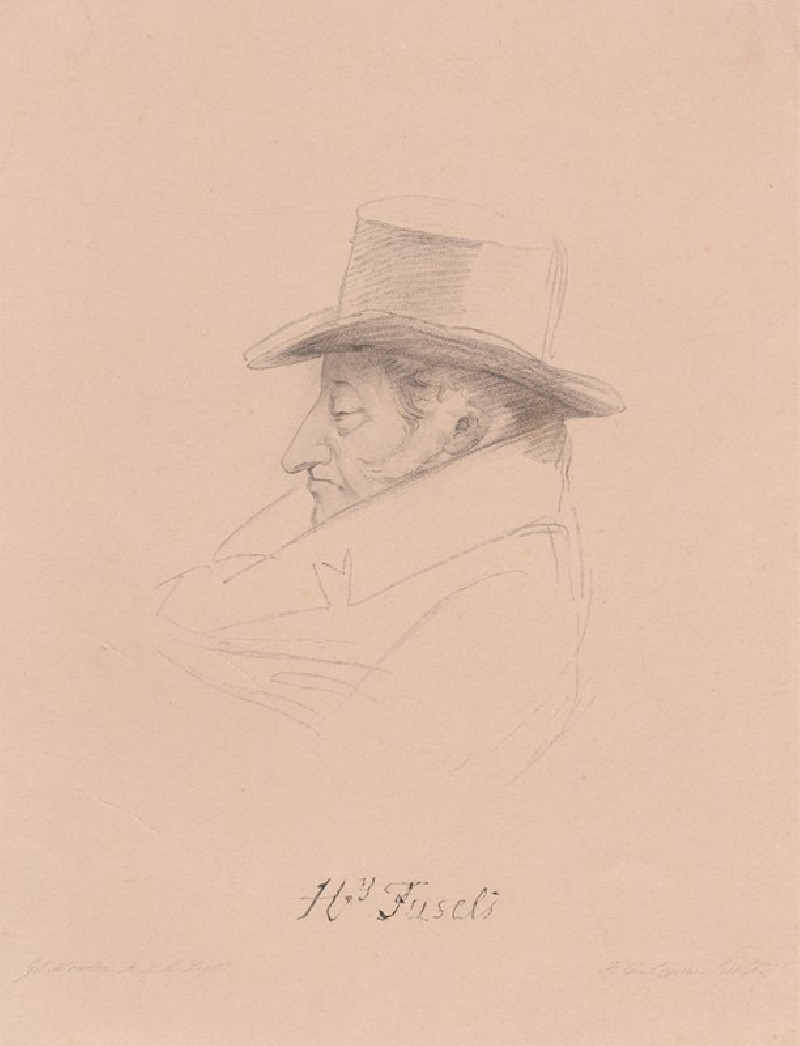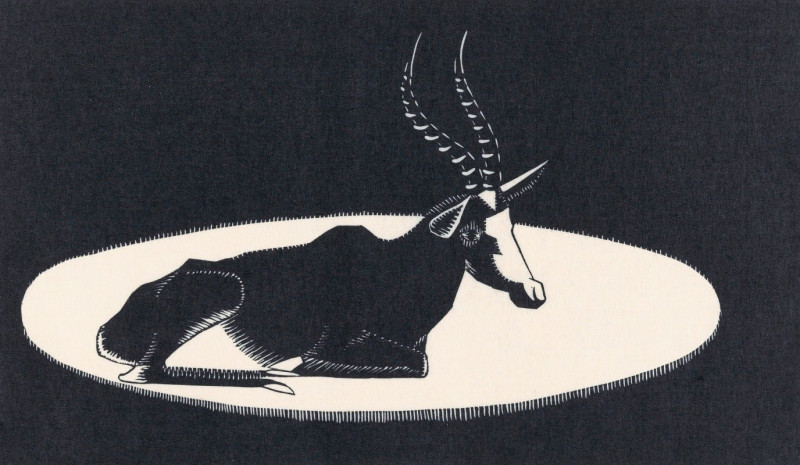Chemin À L’entrée D’un Bois (1890-91)
Technique: Giclée quality print
Recommended by our customers
More about this artwork
"" (1890-91) by Alfred SisleyImmerse yourself in the tranquility and natural beauty of Alfred Sisley's painting, "." This masterpiece, painted between 1890 and 1891, showcases Sisley's skill as a key figure in the Impressionist movement. The artwork presents a serene pathway leading into a lush woodland, capturing a moment that is both fleeting and timeless.In the foreground, a vivid tapestry of wildflowers and foliage dances in an array of colors, setting a vibrant stage that draws the viewer's eye towards the dense thicket of trees that dominate the composition. The right side of the painting is cloaked in the shadowy greens and blues of the woodland, contrasting starkly with the lighter, airier left side where smaller trees and a hay stack provide balance and depth.Above, the sky is a dynamic element of the scene, with large, soft clouds drifting across a bright blue expanse, suggesting the movement of a gentle breeze. The play of light and cloud shadows adds a dynamic quality and enhances the sense of a specific, captured moment.This painting is not just a display of natural beauty, but also a testament to Sisley's mastery in portraying light and atmosphere, making the viewer feel as if they are stepping into a peaceful summer day, about to explore the cool depths of the inviting woods.
Delivery
Returns
Alfred Sisley (1839–1899), an English impressionist artist, was renowned for his breathtaking impressionist landscape paintings. Born in 1839 to a wealthy family in Paris, Sisley spent most of his life in France. Despite being intended for a career in commerce, he rebelled and pursued his passion for painting as an amateur in the studio of Charles Gleyre, where he befriended artists Claude Monet and Pierre-Auguste Renoir. The financial loss of his family in the Franco-German War led Sisley to make a career out of his art, though it left him financially distressed. It wasn't until after his passing in 1899 that the true value of his work was recognized.

